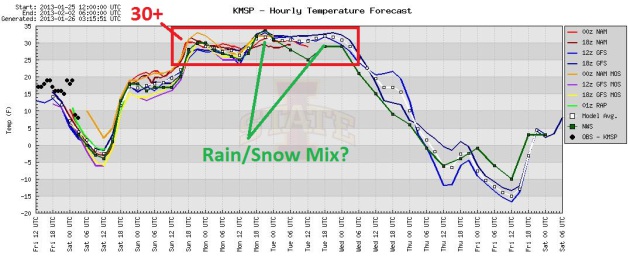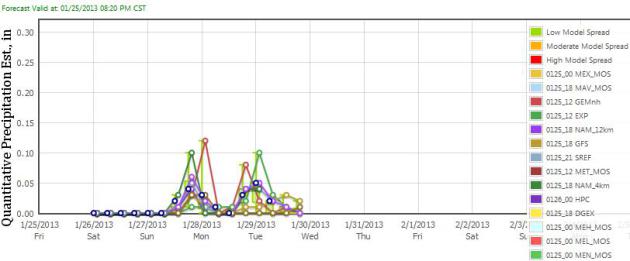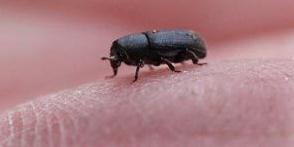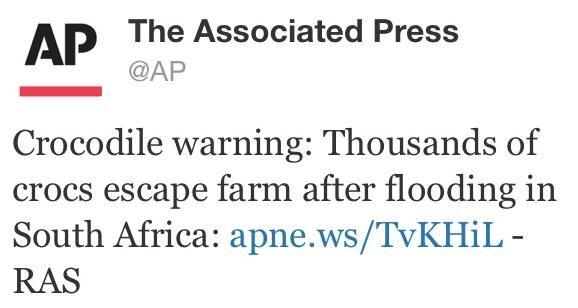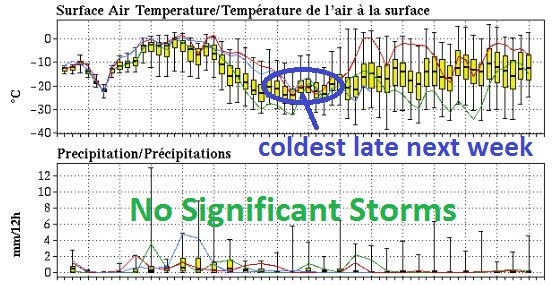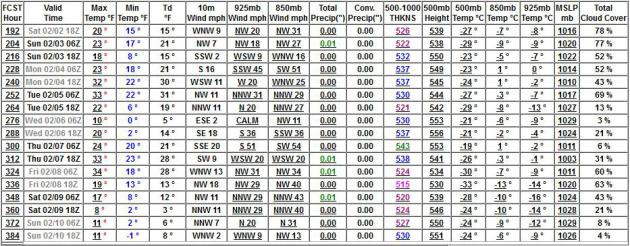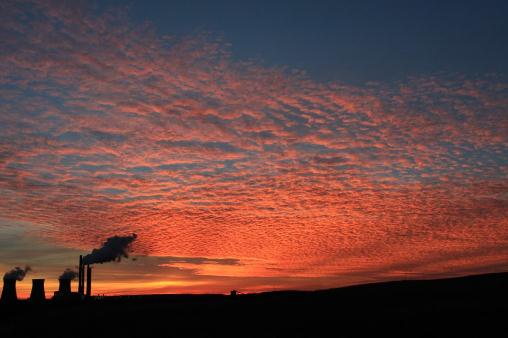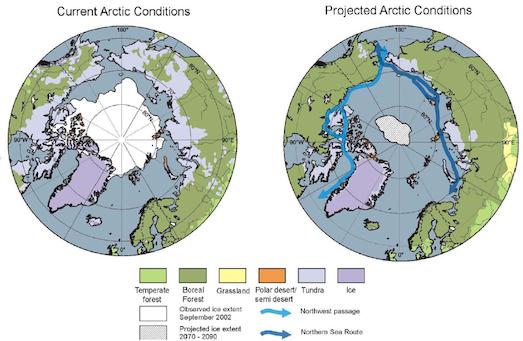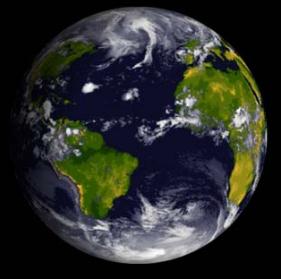Good and Cold
The cold is grating, but on some level it's a
blessing. Earlier this week: -40F at Orr; -43F Embarrass. That's a
relief, if you want to see Minnesota's North Woods avoid the fate of
much of the Rockies and Alaska, where beetles have decimated millions of
acres of trees.
Why? A warmer climate. According to Lee Frelich
at the U. of Minnesota's Center for Hardwood Ecology mountain pine
beetles are killed off by -40F temperatures. Frelich says this beetle
can't cross the Great Plains, where there are no trees, "However, that
could change with a warmer climate and less frequent occurrences of -40F
in the southern boreal forest."
Mark Seeley examined records from 8 northern
Minnesota climate stations. "7 of the 8 climate stations showed a
decrease in frequency (of -40F) ranging from 25 percent to over 60
percent fewer occurrences in the 1981-2010 period (vs. cold records from
1951-1980). Details from both scientists below.
A nippy start gives way to moderating
temperatures; low 30s likely tomorrow & Monday. I may take my shirt
off and fire up the grill.
More subzero nights arrive late next week, but I think the worst of the chill will be over by February 2. Groundhog day.
6 more weeks of winter? Count on it.
* photo above courtesy of Food Channel Guru and local media legend Andrew Zimmern. I hope he was flying somewhere warmer.
A Sloppy Thaw - Then Colder Again. Models show highs
at or above 30 from Sunday into Tuesday morning, followed by another
temperature tumble by Wednesday of next week; a couple of subzero nights
possible late next week, but not quite as cold as earlier this week.
Graphic: Iowa State.
Moderating Temperatures. We should approach 30
Sunday, possibly top 32 F. by Monday. ECMWF prints out light
precipitation Monday, the atmosphere probably warm enough for mostly
rain. A changeover to wet snow can't be ruled out Tuesday, but right now
amounts (at least in the metro) don't look terribly impressive. By next
Thursday it will feel like January again.
Rain - In Late January? It's a trend we're seeing
more of in recent winters, a 4X spike in midwinter rain/ice since 2000
in the Twin Cities, according to Mark Seeley's research. Model guidance
shows as much as .10" liquid Monday and Tuesday, possibly a mix of rain,
sleet and wet snow. Source: NOAA.
Snowfall By Monday Night. I'm not buying this (yet),
but in the spirit of full disclosure, and showing you how the (weather)
sausage is made, here is the latest NAM forecast showing predicted
snowfall into Monday night. A band of a few inches of snow over northern
Iowa and far southern Minnesota, as much as 6-8" of slush for central
Wisconsin? We'll see. I want to see a few more computer runs - I fear
we'll have too much warm air aloft for all snow.
Cold Week With Some Records Broken. Here's an excerpt from this week's edition of
WeatherTalk, courtesy of Mark Seeley: "
This
week's weather pattern brought the coldest temperatures in years to
many parts of Minnesota, and coldest in the 48 contiguous states on
some dates. There were many reports of lows ranging from -30 degrees F
to -40 degrees F across the northern counties, with windchills ranging
from -35 to -50 degrees F at times. The coldest temperature was -42
degrees F at Embarrass on January 24th (Thu) and the coldest windchill
was -54 degrees F at Grand Marais Airport on January 21st (Monday)."
Seeley also points out that a lack of snow (a great insulator) means the
frost level is going much deeper this winter:
"
The absence of deep snow cover exposed the soil to the
Arctic-like cold blast this week. As a result frost depths increased
significantly, in some cases going from 4-6 inch depth down to 16 to 20
inches in depth. Actual soil temperatures plummeted as well, dropping
into the low to mid 20s F at the 4 inch depth, and into the single
digits and low teens F at the shallower 2 inch depth. These low soil
temperatures can damage plants, and is one of the reasons so many
gardeners use mulch or straw (insulation) to cover the soil in the
winter. In agricultural pasture lands and alfalfa fields such low
temperatures pose a risk of winter injury."
* Wolf Moon photo above courtesy of Ann Karrick.
Frequency of -40F Up North.
Click here
to see a YouTube clip, explaining the many benefits of cold air, and
how -40 F. up north can innoculate Minnesota's boreal forest from pests,
including beetles. Following up on the column above I wanted to share
the comments e-mailed to me from Minnesota climate expert Mark Seeley:
"After seeing the -42 at Embarrass this morning....I was thinking of the same question.
From a cursory look at our state data base, I selected 8 northern
Minnesota climate stations (Baudette, Roseau, International Falls, Big
Falls, Itasca State Park, Warroad, Thorhult, and Waskish) with nearly
complete histories of daily measurements from 1951 to present. Then I
compared the frequency of -40 F or colder over the periods 1951-1980
versus 1981-2010. Seven of the eight climate stations showed a decrease
in frequency ranging from 25 percent to over 60 percent fewer
occurrences in the 1981-2010 period. The only one that showed an
increase in frequency was Waskish, but that station may have moved at
one time. Examples of the change in frequency: Itasca State Park
recorded 17 nights of -40 F or colder from 1951-1980, and only 11 since
1981 (they have reported no such readings since 1997); Warroad recorded
16 nights of -40 F or colder from 1951-1980, but only 10 since 1981."
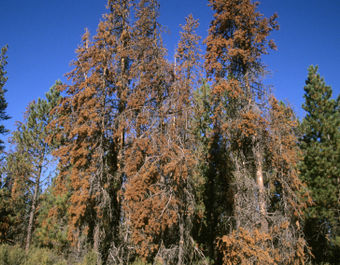
More on Vulnerability of Minnesota's North Woods and BWCA to Pests In A Warming Climate. Here is more detail from Lee Frelich, at the University of Minnesota's Center for Hardwood Ecology:
"We have 100 Hobos in the BWCAW reading temperature
data every hour, but we won't download the winter data until April or
May, and this is the first winter we have had them out there. When we
do, it will be very interesting to see the variation in minimum
temperatures for various landforms and forest types.
I can give you three examples of insect pests of
trees that would be affected by -40 degrees: (1) The Mountain pine
beetle, native to North America, but not to MN; (2) The Eastern larch
beetle, native to MN, and (3) the emerald ash borer, native to Asia.
Mountain pine beetle, which has been shown to infest
jack pine at its western range limit in Canada, is killed off by -40 F
degree temperatures. This is probably why the insect never made its way
to Minnesota from the Rocky Mountains - it can't cross the Great Plains,
where there are no trees, and can't cross the southern boreal forest
across Alberta, Saskatchewan and Manitoba to get to Minnesota as long as
periods of -40 degree weather occur there. However, that could change
with a warmer climate and less frequent occurrences of -40 in the
southern boreal forest.
Eastern larch beetle has long been
present in MN as a native insect that generally remained at low levels
and attacked only weakened, dying trees in the past. However, in recent
years it has killed large acreages (60,000+ acres with major mortality)
of larch (aka tamarack) in MN, and the reason is thought to be warmer
winters, allowing populations of the bug to build up and attack healthy
trees.
An invasive species from Asia, the emeral ash borer,
has killed tens of millions of ash trees in Michigan, Ohio, and
southern Ontario, is also likely to be killed by -40 temperatures (or
perhaps even -30). It arrived a few years ago in the Twin Cities, where
its probably not cold enough in winter these days to kill the insect.
Whether it will be able to kill millions of ash trees in the ash swamps
of northern Minnesota could depend on winter minimum temperatures and a
warmer climate in the future.
Lee E. Frelich
Director, The University of Minnesota Center for Forest Ecology
Chicago Snowless Streak Broken. It snowed in Chicago Friday, the first 1" of the winter season. Yes....really. More details from
NBC News. Photo credit above: Nam Y. Huh / AP. "
A jogger runs along a snow-covered street in Evanston, Ill., a suburb of Chicago, on Friday."
PUBLIC INFORMATION STATEMENT
NATIONAL WEATHER SERVICE CHICAGO IL
949 AM CST FRI JAN 25 2013 /1049 AM EST FRI JAN 25 2013/
...CHICAGO OFFICIALLY OBSERVES FIRST DAILY ONE INCH SNOWFALL...
THROUGH 930 AM...CHICAGO OHARE INTERNATIONAL AIRPORT HAS OBSERVED
1.1 INCHES OF SNOWFALL TODAY...JANUARY 25TH. THIS IS THE FIRST DAY
OF THE 2012-2013 WINTER WHERE CHICAGO OBSERVED OVER ONE INCH OF
SNOWFALL. THIS ENDS THE RECORD STREAKS FOR BOTH THE LATEST FIRST
ONE INCH OF SNOWFALL AND THE LONGEST STREAK WITHOUT AN INCH OF
SNOWFALL.
LATEST FIRST CALENDAR DAY ONE INCH OF SNOWFALL IN CHICAGO:
RANK DATE
--------------------
1. JAN 25 2013
2. JAN 17 1899
3. JAN 16 2002
4. JAN 15 1890
5. JAN 14 1937
* information courtesy of NOAA and Chad Merrill at Earth Networks.
Crocodile Warning! I think that's just about the
only thing I haven't seen crawled at the bottom of the TV screen in the
last couple of years. Details from Silicon Valley's
Mercury News.
Worst Of The Chill Over By Feb. 3? I wouldn't bet
the farm on this, but the model guidance I'm seeing leads me to believe
that the worst of the subzero cold will retreat into Canada by Feb. 3 or
4. We'll still see cold fronts, but probably no subzero highs, and
fewer subzero nights as we head into the second week of February. Data
from Environment Canada (above) shows a lack of big storms looking out 2
weeks.
Evidence Of A Higher Sun Angle. By early February
average temperatures are rising, finally responding to a higher sun
angle and longer daylight, formidable enough to counteract long nights
and snowcovered ground over Canada. GFS model guidance above shows
mostly 20s and 30s (above zero!) from next weekend into February 10; no
subzero lows during that period with 850 mb. temperatures ranging from
-13 to +1F. Here in The Land of Low Weather Expectations this qualifies
as "good news". A storm, some real moisture, would qualify as excellent
news.
Climate Stories....
In An Era Of Climate Change, Where Will The Fish, And The Money, Go?
Minnesotans love to fish (hardly a bulletin), but last summer it was so
hot that many fish died in overheated lakes. A fluke, or a sign of
summers to come? Here's an excerpt of a story at
Popular Science that caught my eye - focusing on recent shifts and trends seen in Arctic waters: "
Like
the American pika and some other land-based creatures, fish are on the
move as they try to adapt to a changing climate. One place this is
happening is the seas surrounding the Arctic Ocean. But precisely how
fast, in what direction, and to what effect the fish will migrate from
their home turf is a big unknown....The seas around the Arctic Ocean are
estimated to host at least 20 percent of all the fish in the world’s
seas. Aside from their economic promise the northern seas could also
play a big role in contributing to global food security. “The world’s
growing population means need more access to food resources,” Lisbeth
Berg Hansen, Norway’s Minister of Fisheries and Coastal Affairs, told the Arctic Frontiers conference I’m attending this week in the northern Norwegian city of Tromso...."
Image credit above: "
A map of current and projected Arctic conditions." IPCC
The Effects Of Climate Change Have Arrived Ahead Of Schedule. Here's a snippet of an Op-Ed at
The Washington Post: "...
Everyone
from small to large businesses, from local to state governments are
now factoring climate change into their planning. A local architect
told me the other day that there are no stock gutters that have the
capacity to handle the run-off from today’s more intense downpours. In
corporate board rooms, climate change is now an issue discussed in strategic business plans
and governments are wondering how they are going to possibly afford to
pay for storm clean-ups and the economic loss caused by floods and
drought. In New York City alone, the two main emergency rooms that serve
lower Manhattan were barely up and running two months after Sandy and
the money needed to repair the city's infrastructure is a mind-blowing amount,
not even accounting for the money necessary to fortify it against the
next storm. The impact of climate change has arrived ahead of schedule,
and the gulf between reality and the climate deniers has widened...."
NASA Retirees Appeal To Their Own Lack Of Climate Authority.
Who do you believe, a retired astronaut, or thousands of climate
scientists, all saying pretty much the same thing. Hmmm. Let me think
that over. Details from
Skeptical Science: "...
Now in January of 2013, a group of 20 "Apollo era NASA retirees" has put together a rudimentary climate "report" and issued a press release
declaring that they have decided human-caused global warming is not
"settled" and is nothing to worry about. This time around they have not
listed the 20 individuals who contributed to this project, but have
simply described the group as being:
"...comprised of renowned space
scientists with formal educational and decades career involvement in
engineering, physics, chemistry, astrophysics, geophysics, geology and
meteorology. Many of these scientists have Ph.Ds"
Make Climate Change A Priority. Here's a portion of an Op-Ed (appeal) from the President of the World Bank at
The Washington Post: "...
If there is no action soon, the future will become bleak. The World Bank Group released a reportin
November that concluded that the world could warm by 7.2 degrees
Fahrenheit (4 degrees Celsius) by the end of this century if concerted
action is not taken now. A world that warm means seas would rise 1.5 to
3 feet, putting at risk hundreds of millions of city dwellers
globally. It would mean that storms once dubbed “once in a century”
would become common, perhaps occurring every year. And it would mean
that much of the United States, from Los Angeles to Kansas to the
nation’s capital, would feel like an unbearable oven in the summer...."
In Wall Street Journal Op-Ed Bjorn Lomborg Urges Delay With Misleading Stats. Here's an excerpt from
Climate Science Watch: "...
Lomborg makes many statements that almost all climate scientists would agree with. These include:
- Investments in hurricane resilience should be increased due to projected increases in storm intensity.
- In the long run, the world needs to cut carbon dioxide emissions.
- Investments in renewable energy technology R&D should be dramatically increased.
However, Lomborg ends these common-sense recommendations with the
conclusion that current investments in climate mitigation, including
renewable energy subsidies, are wasteful. He uses a series of
distracting and misleading statements about trends in extreme weather
to minimize the risks we face and delay action..."
Study Finds We Still Believe Untruths, Even After Instant Online Corrections. I found this to be an interesting nugget of confirmation bias, courtesy of
Tech Crunch; here's an excerpt: "
If
you’ve ever wondered why birthers, inside jobbers, and other
conspiracy theorists won’t simply take the truth at face value, two
researchers at OSU have found that we tend to ignore – and reject –
instant corrections to data. The study,
performed by R. Kelly Garrett and Brian Weeks, examined what happens
when untruthful information is immediately corrected in a news story.
While some programs claim to call out false information automatically,
such systems make users “more resistant to factual information.” That’s
right: the more truth we read, the more we tend to believe
strongly-held lies. “Humans aren’t vessels into which you can just pour
accurate information,” said Garrett. “Correcting misperceptions is
really a persuasion task. You have to convince people that, while there
are competing claims, one claim is clearly more accurate...”

